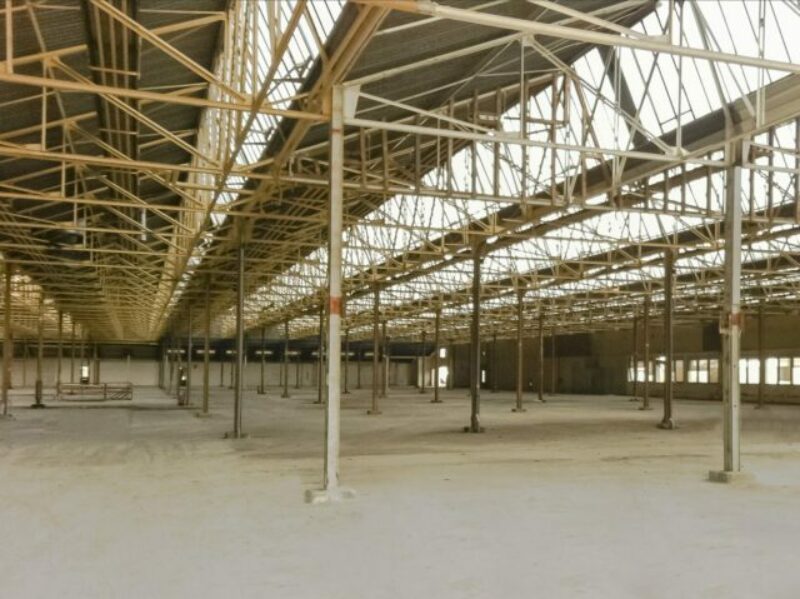Reorganising your industrial facility: the challenges of redevelopment on an occupied site
Renovation, extension and modernisation projects, according to several studies and experts, account for more than half of the real estate projects carried out in the industrial sector.
This can be explained by:
- The scarcity of land
- The obsolescence of existing facilities
- The need to accommodate growing activities
Your business is thriving and you need to expand? Your building or industrial site no longer meets your growth projections?
These considerations might lead you to build on an occupied site.
Many manufacturers face this challenge today. What lies in store for them?
Auditing and reviewing the existing situation
The remediation survey
A site’s redevelopment or expansion often involves the demolition of existing buildings and facilities.
In this case, you will need to plan a remediation survey from the start of the project. Indeed, EU and national regulations require multiple assessments of potential contaminations and other risks.
In old factories, the soil has been polluted by current or abandoned operations. Cleaning it and bringing it up to safety standards requires a remediation programme.
If you are planning to demolish, rehabilitate or redo the interior of an existing building, you are likely to face the dreaded problem of asbestos.
Contrary to popular belief, asbestos is not only found in corrugated fibre cement roofing. It’s also common in road surfaces, buried PVC or concrete networks, insulation, and in the glue used in PVC floor coatings. You will need to take this into account when planning to demolish a building or rebuild a storage area or roadway, for instance.
What about business continuity?
If you want your industrial facility to continue operating during the construction work, you might need to phase the project. Each phase will be associated with changes in production flows and traffic patterns on the site – and possibly with temporary routes for pedestrians and vehicles.
In addition to these flow issues, a major constraint for maintaining “business as usual” is to keep utilities up and running – namely the fluid and energy networks.
The first thing to do is to determine where your energy production, supply and distribution networks are located and how they function. The same goes for the drainage system.
Depending on your site’s future needs, it could be sufficient to re-dimension existing facilities. Or you may have to demolish and/or relocate existing facilities to create new ones.
Create or relocate networks?
If you’re replacing an old network, the first step is to build the new production facilities. These will be connected to the existing networks. When the new facilities are up and running, buildings, utilities and energy are connected to the new networks. You can then shut down and decommission the old equipment.
When you relocate a network, you will want to minimise downtime. To do this, first carry out all the preparatory works: all networks, foundations, pits and pads, new pipes and connections, etc. should be designed and built in advance. Once the new network is in place, you can move the production equipment. This operation can be scheduled over a weekend or overnight to ensure minimal disruption to production.
Building on an active site
Inevitably, when you begin to redevelop, extend or renovate an active industrial site, a major issue arises: the construction crew and the factory workers need to coexist.
Inconvenience and risks
Your first priority is the staff’s safety. Secondly, you’ll want to implement the best solutions to avoid interferences and disruptions to your facility’s operation and production. And yet you’ll want the construction work to move ahead full steam.
Managing the construction crews can be an issue. They tend to be accustomed to working in closed-off sites, without contact with third parties or local workers.
Similarly, the factory workers have their own habits and are not used to sharing space with construction crews.
Solutions for an efficient construction site
The first solution is to separate flows and work in closed areas.
The objective is for each worksite area to be isolated and inaccessible to the factory workers, limiting their interaction with the construction crews. This involves setting up temporary and independent entrances, itineraries and storage areas.
There are projects where this separation is not feasible. Special reception and control procedures must then be put in place.
The levels of risk that exist at an industrial site have an impact on the construction work too. Indeed, depending on your activity, there may be risks of explosions, fire, and so on. It may be necessary to train the construction crews accordingly.
Last but not least, you will need a permanent coordination team. This is essential. Regular progress reviews are not enough; ongoing coordination between the teams will also be necessary. Designated safety coordinators need to meet on a monthly, weekly or even daily basis for updates and planning.
Choosing the right partner
Redeveloping industrial brownfield is more complex than building on a greenfield site.
The success of this type of operation lies in effective anticipation and the mutual understanding of each party’s challenges – the manufacturer’s and the builder’s.
It is therefore critical to choose a partner who will ask you the right questions, understand your processes, advise you and adapt to your needs throughout the project.
GSE, as a global contractor, has worked with industrial companies for decades. Our teams are used to operating in line with our clients’ process constraints.
Always taking an approach that combines technical requirements and business imperatives, we suggest various solutions, cost them and phase them to provide you with a solid foundation for your decisions regarding investment and operating costs.



